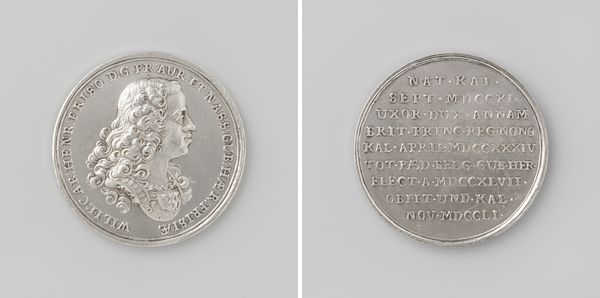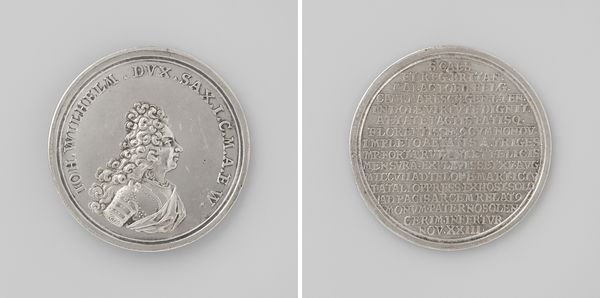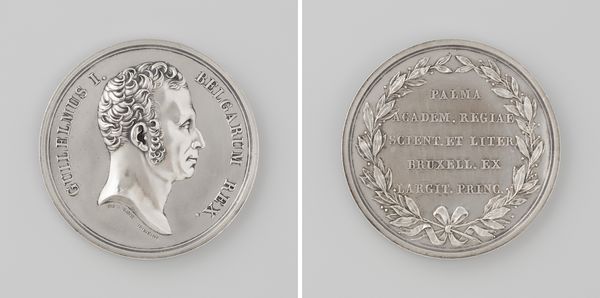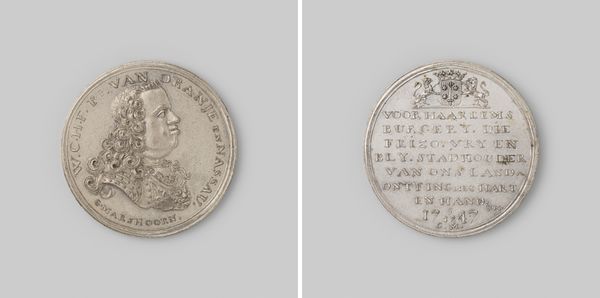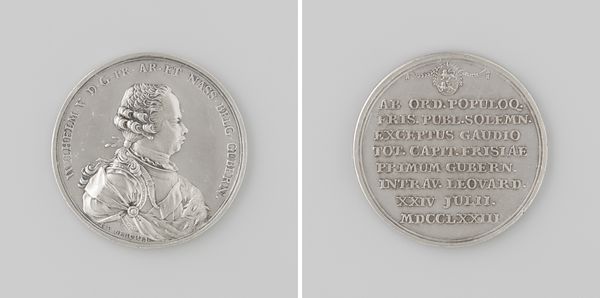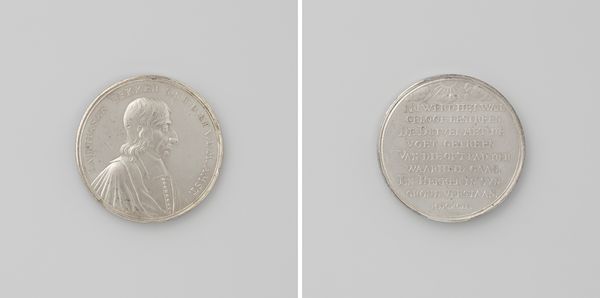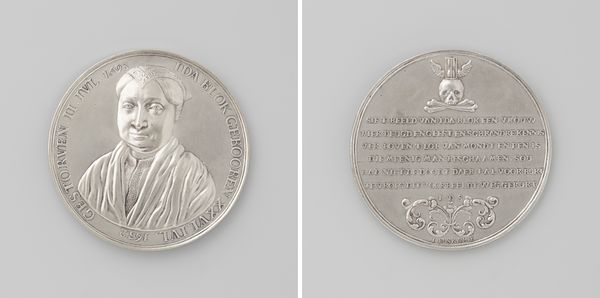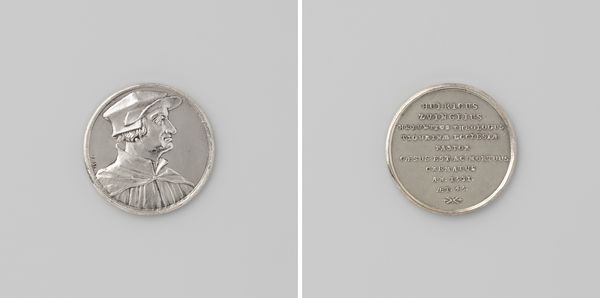
Verdrag van Teplitz, ter ere van Alexander I, tsaar van Rusland, Frans I, keizer van Oostenrijk en Frederik Willem III, koning van Pruisen 1813
0:00
0:00
metal, relief, engraving
#
portrait
#
neoclacissism
#
metal
#
relief
#
history-painting
#
engraving
Dimensions: diameter 4.6 cm, weight 26.24 gr
Copyright: Rijks Museum: Open Domain
Curator: Here we have a fascinating relief engraving dating back to 1813 by Josef Nikolaus Lang. It's a metal medallion commemorating the Treaty of Teplitz. My first impression is the almost eerie uniformity of the three rulers’ profiles. There’s something unsettling in their identical, stoic gazes. Editor: The medal represents Francis I of Austria, Alexander I of Russia, and Frederick William III of Prussia. Consider the moment this piece memorializes: 1813. The Treaty of Teplitz, therefore, represents an important alliance during the Napoleonic Wars, when these three powers united to defeat Napoleon's forces. The engraving functions, then, as a powerful symbol of geopolitical power and cooperation. Curator: Absolutely. And note how Lang employs Neoclassical aesthetics to convey this power. The clean lines, the idealized profiles reminiscent of Roman emperors... it's all about projecting strength, stability, and legitimacy. Semiotically, each ruler stands alone but is joined, symbolizing their political alignment. It really elevates its presence with simplicity. Editor: Though I see it somewhat differently. It's less about simplicity and more about the erasure of individuality for the sake of a unified front. Their distinct identities become subservient to the collective "public vote," VOTA PVBLICA as stated in Latin on the reverse side of the medallion. The almost unsettling uniformity suggests a forced unity, perhaps masking underlying tensions. How stable was the alliance afterward, considering differing interests? Curator: A relevant question that underscores my interest in Lang's compositional strategy: How could the formal constraints imposed on him amplify certain ideas while also perhaps muting other important things that shaped such an alliance. And who and what is missing here: women and marginalized groups are absent, revealing whose narratives are valorized by dominant cultural artifacts. The alliance's goals are etched within its medium and method of making! Editor: And for me, thinking about materiality and surface helps. This discussion underlines how a seemingly straightforward commemorative object such as the Lang's metal medallion carries layers of meaning that can be activated with interdisciplinary looking.
Comments
No comments
Be the first to comment and join the conversation on the ultimate creative platform.

